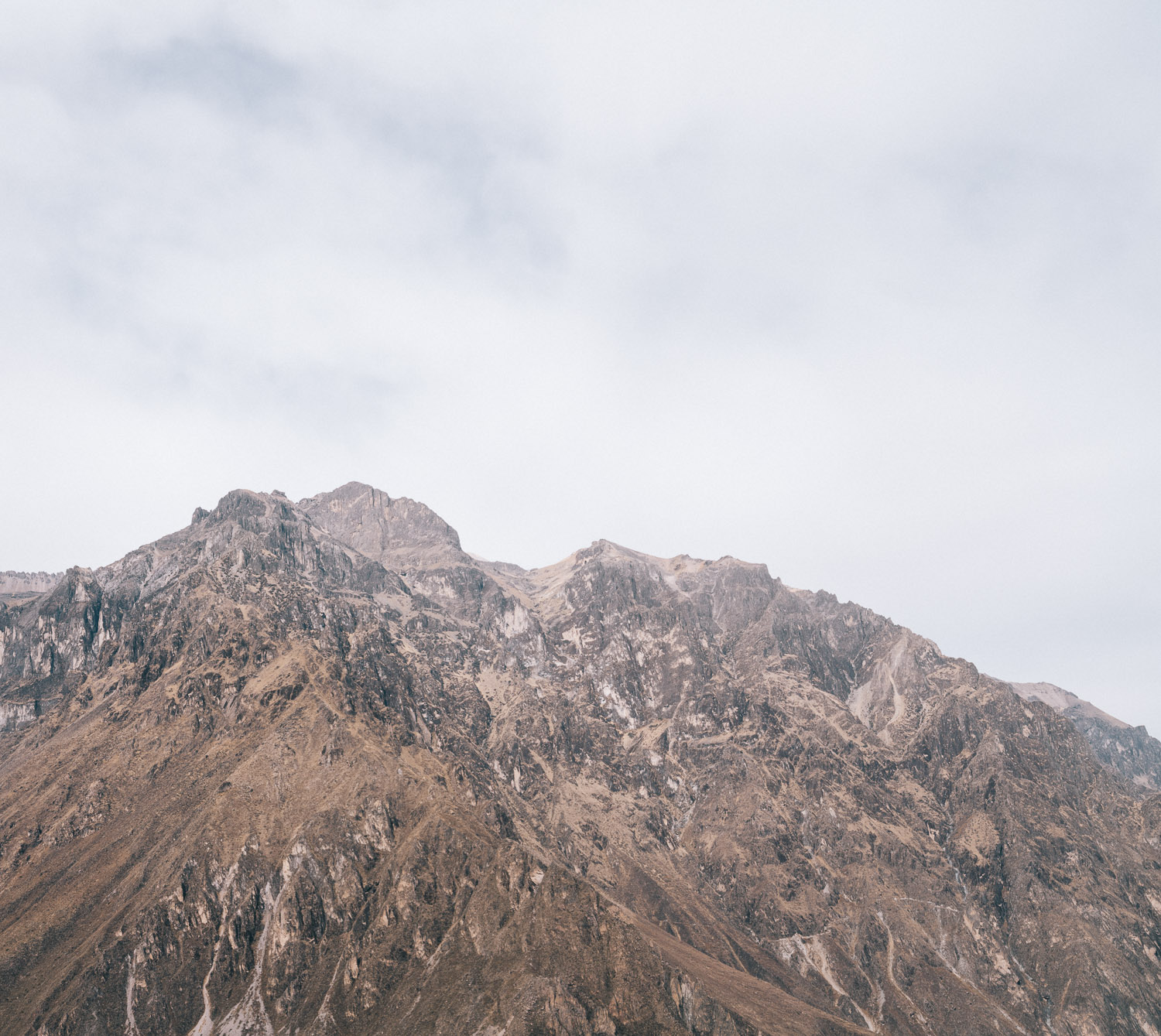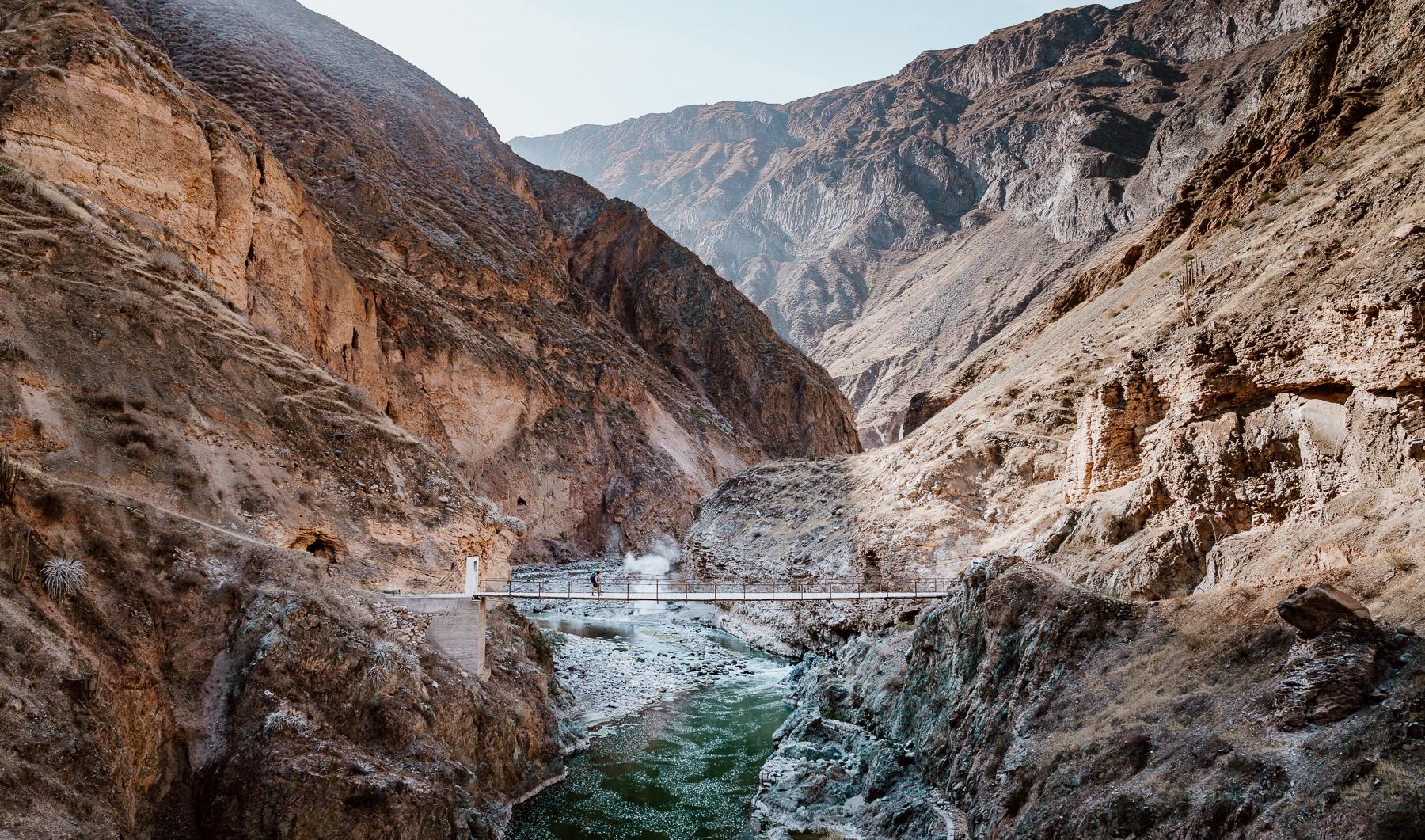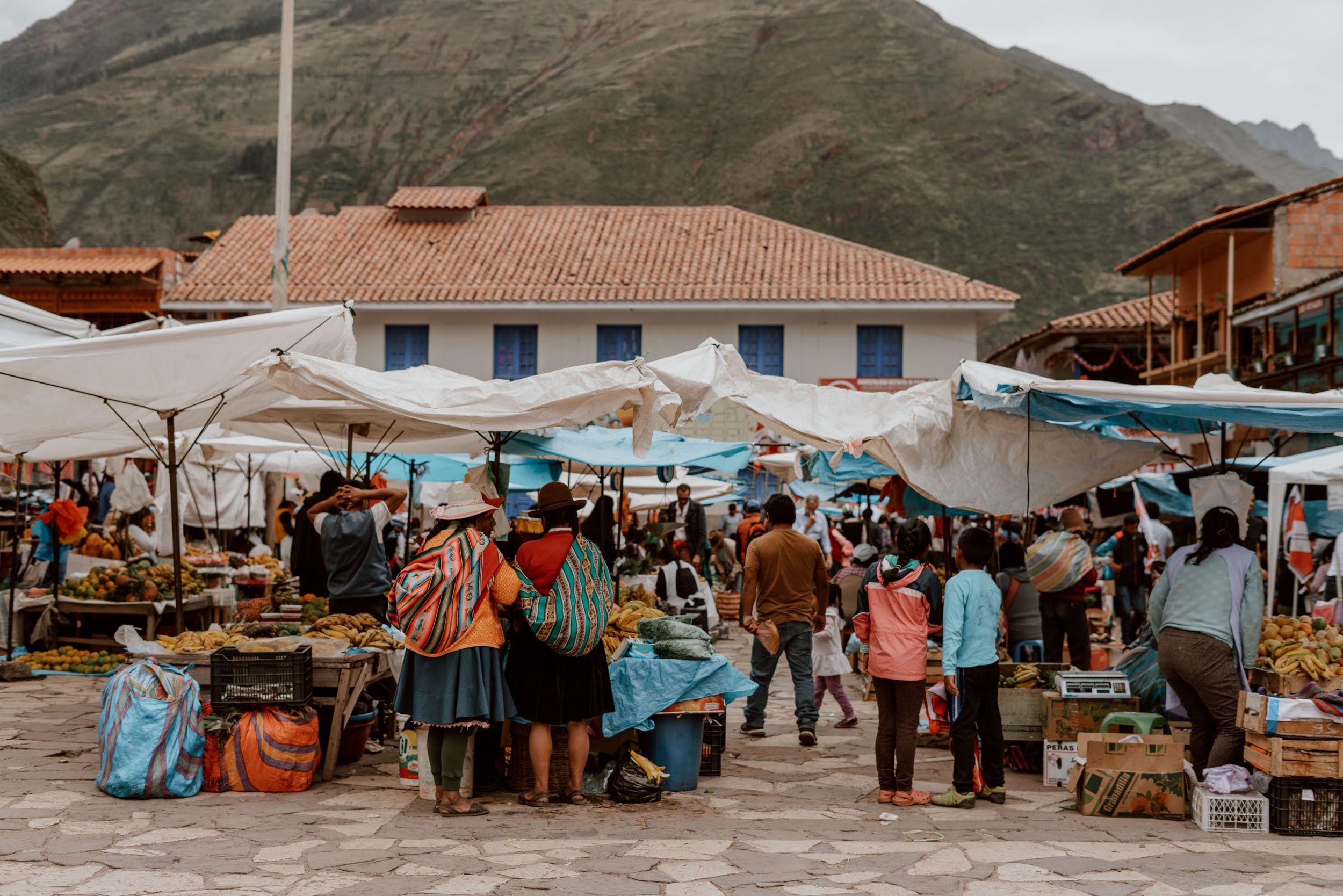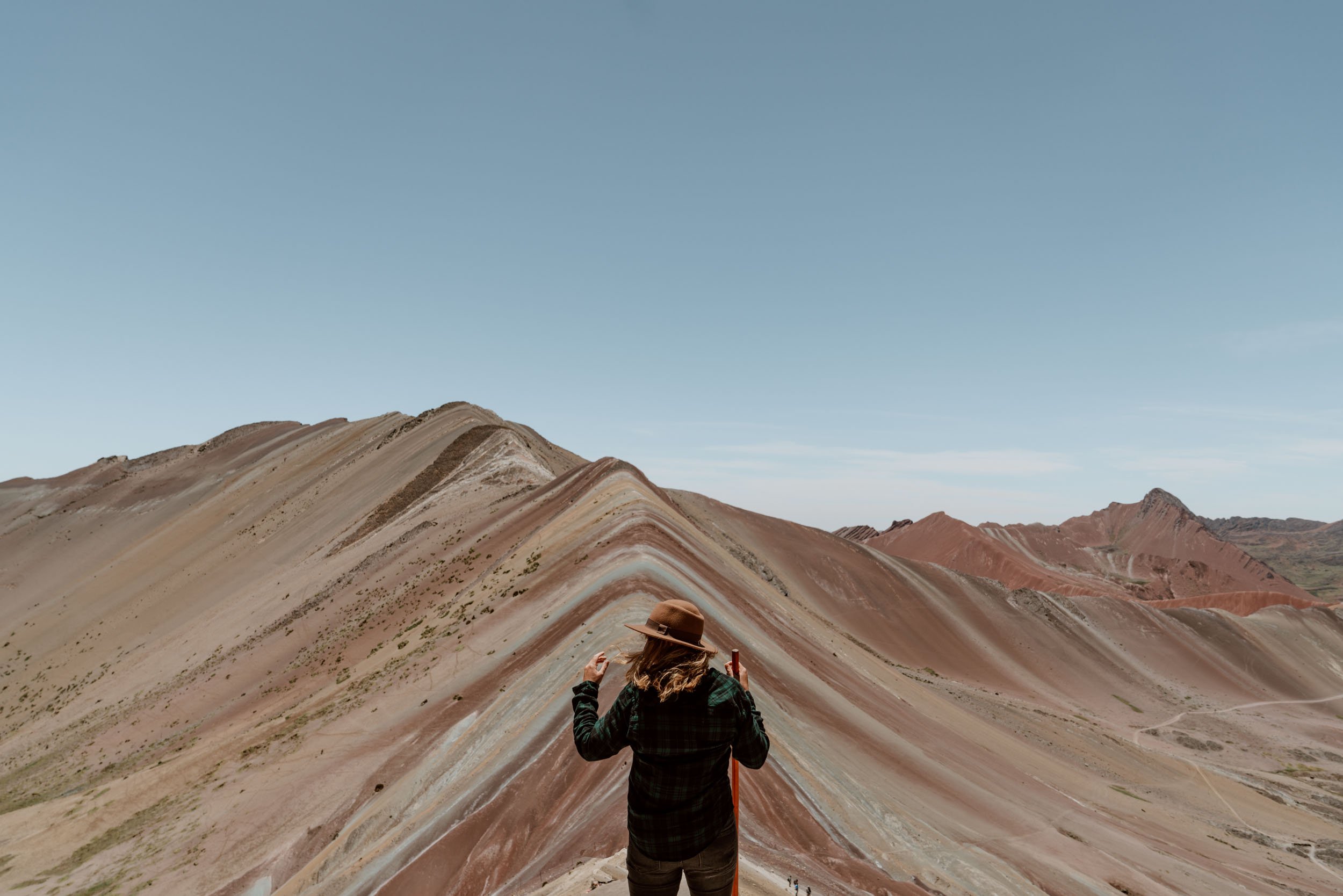“There’s one main difference between a traveller in South America, and those in South East Asia - a pair of hiking boots hanging from their backpack”
Nowhere in South America is this statement better summed up than in Peru.
Machu Picchu, the Colca Canyon, the Santa Cruz Trek and any number of day hikes in and around Huaraz in the north or the Sacred Valley in the south; when it comes to the land of the Incas it’s clear that many places worth visiting lie at the end of a dusty trail.
Just how we like it.
In fact, we worked out that on our six week trip to Peru, our second visit to the country, we spent 45% of our time on hikes! And, unsurprisingly, many of our very favourite experiences were on those mountains, down those trails, and in those valleys. The cities and coastline of Peru offer some great experiences and cultural insights, but it’s out walking through these remote places where you will really fall for Peru, have more meaningful interactions, and gain a deeper insight into how its history has been shaped by its soils and citadels.
So, if you’re planning your own Peru route right now, the chances are that you’re already a keen hiker who can’t wait to take on the Andes, Cordillera Blanca, jungle paths, and walk Incan trails to hidden ruins - or perhaps you’re a reluctant hiker trying to work out exactly how you’re going to manage to so many bloody hikes in the space of a few weeks! What about the altitude? Which ones can’t you miss? What do you need to pack?!
To make life easier for you - and to hopefully set your mind at ease and help avoid some rookie mistakes - here are our 12 essential things to know before hiking in Peru.
You Have To Hike in Peru
You may think we’re labouring the point here, but we simply can’t emphasise enough how essential hikes are to the classic Peruvian travel experience. You wouldn’t go to Scotland and not try whisky, now would you?
For certain sights and attractions, you can absolutely choose to take a tour which removes the majority of the hard work and planning, but the beauty of going the long way round over multiple days on your own two feet provides a really rich experience, access to secluded scenery, and insight into day-to-day countryside life.
And even if you opt to take a tour because you aren’t a fan of independent hikes or are worried about fitness, it’s likely that you will still have to cover at least few kilometres on foot to reach that glacier lake, mountain peak, or Incan city in the clouds.
So, instead of worrying about hiking in Peru, we think you should view it as an essential and important part of the adventure; if you don’t at least cover a few kilometres on a trail, then you’re not really doing Peru right.
And who knows, you may just fall in love with hiking! It’s worth noting at this stage that we still refer to ourselves as ‘reluctant hikers’ rather than ‘natural born’ ones despite hiking being such a big feature of how we explore certain new and old places on our travels!
It Is Absolutely Beautiful
We could fill this post with way too many beautiful landscapes and vistas from the countless hikes we have done in Peru (after all we don’t just want to focus on the dull, practical bits but provide you with a healthy dose of inspiration and wanderlust too!).
But there really are some special moments and places than you will only be able to see with your hiking boots firmly strapped on - that’s why so many travellers still fall in love with Peru when they’ve got blisters on their feet, and had to start the day’s walking at 4 a.m.
Most Hikes Are At High Altitude
The quickest way for someone to ruin their Peruvian adventure, or really struggle on a day or multiday hike, is to underestimate the impact of altitude - the effects of which can be felt once you venture beyond 2500m above sea level (spoiler alert - a lot of Peru is over 2500m).
As most treks in this part of the world include sections that far surpass this limit, it’s easy to understand why altitude is something that should not be underestimated by any first time hiker or visitor in Peru.
Altitude of Popular Hikes
Colca Canyon | 3300m
Rainbow Mountain | 5200m
Inca Trail | 4200m
Laguna 69 | 4600m
Pisac Ruins | 3300m
In this post, we’ve shared more information on exactly what altitude sickness is, its symptoms, and how to avoid it in South America. The main piece of advice though? Give yourself a few days to acclimatise in Cusco or Arequipa before tackling any of the surrounding hikes. These popular cities, which will likely be on your itinerary already, are at 3,400m and 2,335m respectively so will help your body adjust to having less oxygen available.
And, even more importantly, if you will be hiking at altitude then you need to make certain that your travel insurance will cover you for this activity. Many basic (i.e. cheap) policies will specifically exclude any coverage for hiking above 2,500m-3,000m and you will need to either pay extra or find a provider which includes this. Both TrueTraveller and World Nomads will provide coverage for trekking at altitude and we have used both on our travels - just make sure to confirm coverage when purchasing your policy to give you full peace of mind.
To be clear, talking so seriously and extensively about altitude sickness in this and our other posts about travelling in Peru isn’t scaremongering, but giving you the reality before you arrive. Fortunately neither of us has struggled badly with it, perhaps through luck or perhaps because of how seriously we take it, but other travellers do suffer. In Huaraz, we met one New Zealander whose girlfriend had been laid up in hospital for five days with the severe case of altitude sickness she got on the second day of the Santa Cruz trek (she wasn’t able to complete it). A follower on Instagram let us know that she hadn’t given herself enough time to acclimatise before visiting Rainbow Mountain and it wiped her out for the next three days (including being on an oxygen tank for 24 hours). Five Korean guys we met in Cusco hadn’t been able to eat for two days and had to spend most of their time in bed.
Be prepared and be aware of the consequences of not being prepared for the altitude. Seriously.
Further Reading | Common Mistakes To Avoid When Buying Travel Insurance
Cusco, Arequipa, and Huaraz
These three popular cities are a core part of most one month Peru itineraries, and will be your base or ‘jump off point’ for the majority of the best hikes in Peru.
Our Guide To Arequipa | Our Guide to Cusco | Our Guide to Huaraz
Most hostels will offer a luggage storage room for free to guests, so when you are heading out on a multiday trek, you will leave your big bag and anything unnecessary at the at the hostel so that you are only hiking with the essentials. We strongly advise you not to leave your valuables in these luggage storage rooms however as, even though they may be locked often, they still see a lot of people coming in and out of them each day to pick up / drop off their bags.
As we travel with a large amount of tech, we go out of our way to only stay at hostels which offer a secure padlockable locker for valuables in addition to the luggage storage room - but unfortunately this isn’t a standard offering. Remember, if you plan on staying in dorms in South America, then it’s essential that you bring your own secure padlock (we recommend this 10-digit one).
In addition to planning your single and multiday hikes around these hot spots, be sure to factor in enough rest days into your itinerary after the hike - there is nothing worse than having to get on a 10-hour bus when all your body wants to do is lay in bed, consume instant noodles, and watch Netflix.
Organised Tours vs Independent Hikes
At Along Dusty Roads, we are big fans of trying to tackle any adventure on our own, rather than opting for organised tours. There are however exceptions to this rule when it’s logistically unfeasible or impractical, you want to be with a group, or if an experience is only possible with a tour company (such as the Inca Trail).
The good news for people who travel in a similar style is that many of the best hikes in Peru can be done independently - it just requires a little bit of research and planning on your part (and since we’ve done most of them, you'‘ll find most of what you need in handy little guides about each hike scattered through this post and in our best hikes in Peru post - to be published soon). For example, we did the three-day Colca Canyon trek without a guide.
If you prefer to join a group, or to have the peace of mind which comes from being led by a guide, then you will have no issue finding the right tour for you at any of the hiking hubs in Peru. It’s always cheaper to book them in the location in person (via an agency or at your hostel), but if you are on a shorter Peru trip then you can also find and book reliable, verified tours at companies like GetYourGuide or Viator.
Tip | If your heart is set on conquering the Inca Trail - undoubtedly the most magical way to arrive at Machu Picchu - then it’s important to know that you can only do the hike with an approved tour company and it’s necessary to book months in advance (especially if hiking in Peru’s high season in June - September). We did this G Adventures tour, whilst you can find all the key information in this article on how to pack, plan, and prepare for Inca Trail hike.
Multi-Day Hikes vs. Day-Trips
If you don’t have the time or inclination to take one of Peru’s famous multiday treks (i.e. the Inca Trail, Colca Canyon, and Santa Cruz) which last from 4-8 days and involve camping or basic digs, then the good news is that there are a multitude of excellent, accessible, and affordable day-trip hikes in both the north and south of the country. A selection include:
Laguna Churup | Humantay | Laguna 69 | Pisac
If you’ve got a decent level of fitness, are acclimatised to the altitude and have a good sense of adventure, then very few of the day-trip hikes in Peru should cause you any issues. Sure, you’ll get breathless and tired, but they will be manageable. If you’ve never hiked much or are unfit, then start working on that before you arrive and hit the trail (investing in a FitBit isn’t a bad idea either).
Peru’s multi-day ‘hardcore hikes’ however - like Santa Cruz, Choquequirao, and to a lesser extent, the Colca Canyon - will be very difficult for the inexperienced or out of shape hiker. If you hope to do these, understand you limitations and be realistic about what you’re able to do - after all, you don’t want to ruin your own (and your group’s) experience.
And remember, whether you are heading out on a day-trip or multiday hike, always let someone know either at the hostel or at home where you’re headed to - there have been several (rare) instances of travellers getting lost and going missing on hikes in South America.
Pack Smart
As is hopefully now pretty clear, hiking was a big part of our own Peru itinerary and is central to many other traveller’s plans here. If you fall into the bracket, then we recommend packing at least a pair of good quality waterproof hiking boots (and make sure you wear them in properly before you take on any hikes here), plenty of hiking socks, and a lightweight versatile fleece (Andrew uses this one by North Face), alongside several other key pieces of hiking clothes and equipment.
You can find all our main suggestions on what to pack for hiking in Peru in this packing list.
Purchasing good quality hiking gear is always the best idea, as it should last for all your adventures for years to come. However, if you’re low on luggage space or your budget is a little tight, the good news is that you can rent or buy key pieces of equipment from a variety of shops in Cusco, Huaraz, and Arequipa or from your tour company i.e. hiking poles, sleeping bags, torches. For hardcore hikes, you can also buy or rent things like gas stoves, tents, and even cold weather clothes.
Insider Tip | Staying hydrated is obviously key on any hike. We like to travel responsibly and reduce our plastic footprint wherever possible, and so for the last two years we have travelled everywhere (including South America) with two travel filter water bottles. These have allowed us to fill up from various rivers, waterfalls, and other water sources along the way, as well as taps at the guesthouses or hostels in the city and countryside. As well as instantly providing us with safe water wherever we are, these bottles have saved us money and reduced our environmental impact. We use these 75cl Water-to-Go Bottles, but the The Grayl Ultralight is an excellent alternative too.
Walking In Peru is Not Always Free
A number of hiking routes, whether done independently or with a tour, will charge an access fee to a national park or the monument at the end of the trail. This is usually nominal (i.e. S/. 10), but can be a more significant amount such S/. 70 / £ 16 / $21 for the Colca Canyon or S/. 30 for day-entrance to several of the lake hikes around Huaraz.
If you are heading to Huaraz and plan on doing multiple hikes in the region, then you can buy Huascarán National Park purchase a multi-admission ticket costing multi-admission ticket costing S/. 150 / £35 / $45 (updated April 2019). In the Sacred Valley, several of the ruins which you will either visit on independent hikes or as part of a group will require you to purchase the Cusco boleto turistico in advance.
If you’re going to be doing a lot of hikes, it’s important to factor these costs into your overall Peru travel budget.
Read more | What Things Cost in Peru
Understand The Seasons in Peru
Having travelled in Peru during both the rainy and the dry season, we can happily confirm that hiking is generally possible and enjoyable in each, but they will provide you with potentially two very different hiking experiences.
Dry Season
The dry season, coinciding with winter in Peru, falls between the months of May and October.
Days during these months, expect blue skies and very little rain providing perfect hiking conditions. However, for obvious reasons, this is also the most popular time to visit the country, and all but the most off-the-beaten-path hiking trails will be busy (for these months, you need to book your Inca Trail place months in advance).
Wet Season
December to March is when the rains start to fall, and boy does it get wet.
We actually did the Inca Trail hike at the official beginning on of the wet season and had very, very little rain. However, by the time that we had made it up to Huaraz at the end of the month, we were experiencing torrential downpours every afternoon. Of course, this doesn’t mean you can’t hike (in fact we still completed a number of wonderful, almost rain-free, day hikes), but we would be far less inclined to tackle a multiday hike in the north of Peru that required the erection of tents in the rain in these months.
Note that it is not possible to do the Inca Trail in February, and many of the multiday hike operators in Huaraz shut down during February and March.
READ NEXT | OUR FAVOURITE THINGS TO DO IN CUSCO
To Pole or Not To Pole
After many years of derision towards them, we followed the advice of some of our hiking friends and invested in a pair of travel hiking poles (these ones) for the last 4.5 month trip to South America. For a long time, we viewed these as useless, exclusively for old people or Austrians…but we are now officially converts to the cult of the hiking pole!
In all seriousness, it is possible to do each and every single hike in Peru without hiking poles. The reality though is that they do make hikes easier and your recovery time shorter - after using them three days on the Colca Canyon and four days on the Inca Trail, our legs didn’t really suffer from that nasty heavy fatigue or the aches that usually linger for a couple of days. They are also incredibly useful for balance on slippy ascents.
So, if you’re a newbie to hiking and a little concerned about how you’ll manage, then we recommend buying a lightweight, collapsible / telescopic set which fold up and fit easily into your backpack when not in use. If you don’t want to invest in a good set of hiking poles, then it is usually possible to rent them from most tour operators or buy them in Peru.
Tip | A key component of any hike is to respect the environment and the trail - do not leave anything behind to damage it or act in a way which will negatively impact local communities or affect the route for future hikers.
Take A Positive Mental Attitude
Elias, our guide on the Inca Trail, told us that this was the most essential component for everyone who has successfully completed the it; and we kind of think it applies to a lot of the hikes we did in Peru (little pat on the back here, we completed every single hike we undertook in South America!).
There will be moments on a steep incline or another false summit where you feel like giving up or that carrying 15kgs on your back was a bloody stupid idea, or that the last place you want to sleep is in a tent at 3,000m….but this is why we love hiking. Even though it pushes our limits, makes us drip in sweat, gives us blisters and aching limbs, it really is magical.
And (usually) always worth it.
As John Muir said: "Few places in this world are more dangerous than home. Fear not, therefore, to try the mountain passes. They will kill care, save you from deadly apathy, set you free, and call forth every faculty into vigorous, enthusiastic action.”
And this most definitely applies to hiking in Peru.
Also, if you’re reading this whilst preparing for Peru and don’t feel that you’re fit or experienced enough for some of your dream hikes (or ‘saunters’ as Muir would prefer to call them), then please don’t be put off. Instead, view it as an opportunity, a goal, and a motivation to get in shape, do some more preparation hikes at home, and to push your own comfort level.
Travel changes us all in many ways, so why not view your upcoming trip as the reason to make some changes and start a new chapter of outdoors adventures on your travels.
Don’t Get Lost
Like the proper millennials we are, we have long given up on paper hiking maps and instead rely on several apps when hiking (alongside a healthy dose of pre-hike research) to ensure we don’t get lost or stranded in the middle of the Andes.
The beauty of each of the below alternatives is that the maps and routes can be stored offline and used with GPS, so you don’t have to worry about internet connection (just make sure you download the map and research the route before you set off and bring a fully charged phone and lightweight battery pack!). Note that some may require you to subscribe to a premium version to unlock certain features.
Google Maps | Maps.Me | AllTrails | Wikiloc
Also, if you are hiking independently, please don’t forget that it’s a sensible precaution to let someone know at your hostel or at home just in case something does happen out there. And make sure you get that hiker and backpacker travel insurance!

























